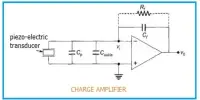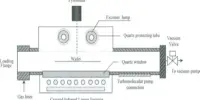The source of and method for tuning the strength and ductility of a class of materials known as high-entropy alloys has been discovered by computational materials science researchers at the US Department of Energy’s Ames Laboratory and its collaborators.
The breakthrough could aid the development of more efficient engines in the power generation and aviation industries, lowering fuel consumption and carbon emissions.
High-entropy alloys are made up of four or more different elements and offer a variety of desired features, including being lightweight, robust, ductile, corrosion-resistant, and perfect for energy-generation applications in severe situations, such as aviation.
However, because the components that make up an alloy can differ, as can their relative amounts, testing the vast number of conceivable combinations and their qualities experimentally is complex and time-consuming.
Green Aviation entails actions aimed at increasing aircraft fuel efficiency, developing the next generation of efficient air traffic control, and developing new technologies and systems engineering methods in order to achieve a future of carbon-neutral air travel around the world.
When we can pinpoint these transformations and the effect they have on a material’s properties, we can predict the strength of it, and we can deliberately design strength and ductility into these very complex alloys.
Duane Johnson
The team lead by Ames Laboratory used a quantum-mechanical modeling method to uncover and forecast the atomic structure of FexMn80?xCo10Cr10, a particularly promising HEA system, as well as how transformations and flaws in that structure result in a stronger, more ductile material.
“When we can pinpoint these transformations and the effect they have on a material’s properties, we can predict the strength of it, and we can deliberately design strength and ductility into these very complex alloys,” said Ames Laboratory scientist Duane Johnson.
These predictions were subsequently tested using sophisticated electron microscopy, including selective-area and electron-backscattered diffraction, on single-crystal samples. The approach, in particular, is applicable to any multi-element complex alloy.
According to Johnson, theory-guided computational design has a lot of potential for improving the performance of these materials, making them stronger, more ductile, and, in many circumstances, less expensive.
These gains in performance could have significant consequences for applications in extreme settings, such as power-generation turbine engines or aviation, which operate more effectively at greater temperatures.
“Using this predictive method, we’ve been able to speed up our alloy development timeline by more than 50%, and demonstrate 10-20% higher operational temperatures,” said Johnson.
He claims that in the case of aviation, this may result in cost savings of hundreds of millions of dollars and a significant reduction in greenhouse gas emissions.
















